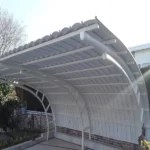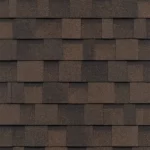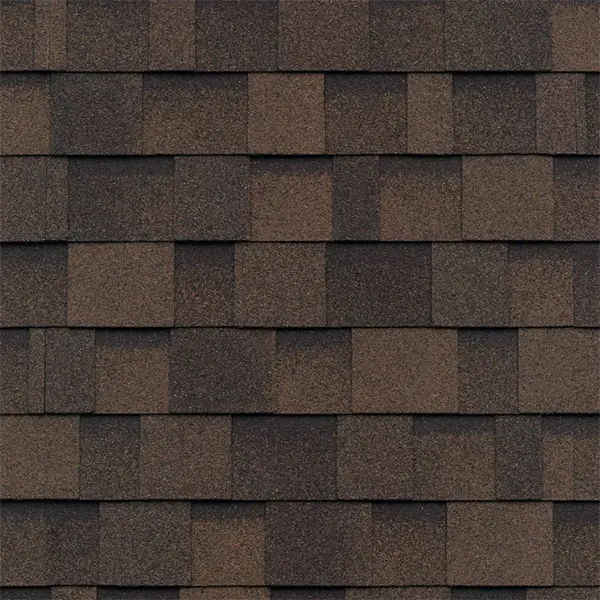Architectural sheeting

Architectural sheeting is one of the fundamental principles in designing and presenting architectural plans. This method allows architects to convey their ideas and creativity visually and comprehensibly to the audience in the form of an architectural sheet. By using architectural sheeting, architects are able to create a strong mental image, provide accurate details and communicate effectively with their audience. In this article, we will review the principles and methods of architectural sheeting. Principles that can be followed to create an effective and understandable architectural sheet. Also, we will explain the reasons for the double importance of sheeting in architectural design and we will examine the key points needed to provide an effective architectural sheet.
What you read on this page
- Architectural sheeting
- What is architectural sheeting?
- The importance of architectural sheeting
- Application of sheeting in architectural portfolio
- Important steps in architectural sheeting
- Important principles in architectural sheeting
Suggested article: 10 important effects of lighting in office decoration
What is architectural sheeting?
Architectural sheeting is the presentation of architectural plans and documents in the form of a sheet with special graphics and layout. These sheets are used to communicate with the audience related to the architectural project. The purpose of sheeting is to create a mental image and overall perspective of the architectural design. The use of sheeting is common in the academic environment, architectural profession and architectural competitions. Also, architectural sheeting allows architects to present their ideas, plans and designs in an orderly and organized manner. These sheets are usually in the form of a neat set of printable and display pages that are designed in a logical and attractive order. Each architectural sheet can include one or more architectural maps, conceptual diagrams, 2D and 3D displays, color and material samples, landscape images, and other information related to the project. The architectural sheet should be attractive and understandable to the audience. These sheets should be attractive in terms of graphics and visual design and use appropriate colors, lines, spaces and alignments. Also, the use of various elements such as images, diagrams and understandable explanations help the audience to understand the plan better. Architectural sheeting is a creative process, and architects must be familiar with graphic design skills, presentation of ideas, and the use of related software to produce effective sheets. Also, a deep understanding of architectural design principles and audience needs is also essential to prepare effective sheets.
Suggested article: What is Perzante in architecture? + Introduction of application software

The importance of architectural sheeting
Architectural sheeting is a vital step in the architectural design presentation process. At this stage, architectural plans and documents are designed in the form of a sheet or page and are displayed in an attractive and orderly manner using graphics, diagrams, images and text. This step is the last chance to make an impression on the audience and if it has an inappropriate sheeting, the architectural design may not be evaluated properly. The importance of this issue is significant in academic, professional and general fields. Finally, architectural sheeting should be presented to the audience in an attractive and understandable way. In the academic environment, architecture professors evaluate the plan based on the architecture sheeting. Therefore, providing a suitable and attractive sheet can have a significant impact on scoring and final evaluation. In the professional field of architecture, architectural sheeting is important for presenting designs to employers, colleagues, and other stakeholders. A good sheet layout can show the abilities, ideas, unique features and advantages of the plan in a clear and understandable way and create trust and effective interaction with the audience. Also, in architectural competitions and architectural exhibitions, architectural sheeting attracts the attention of the jury and the general audience. Neat and attractive pictures and diagrams in the sheeting can significantly combine and understand the design and generally make the presentation of the design more effective. As a result, architectural designers must accurately and professionally use sheeting tools and techniques so that they can convey their ideas and designs to the audience in an attractive and understandable way.
Suggested article: Application of ChatGPT in architecture, civil engineering and interior design
Application of sheeting in architectural portfolio
Architecture sheeting can be an effective tool for building your architecture portfolio. In fact, portfolios are used as key parts of the portfolio. Sheet design allows you to show your plans, projects and ideas in an attractive and understandable way to your audience. By using architectural sheeting, you can present a complete and attractive display of your designs and skills. Finally, presenting a strong and professional portfolio using architecture sheeting can help you attract new audiences, study in top architecture universities, or get the desired job opportunities.
Suggested article: Gestalt in architecture and interior design
Important steps in architectural sheeting
In the first step of architecture sheeting, you should consider the following:
- Sheet Number, Size and Orientation: Based on existing guidelines or limitations, determine how many architectural sheets you need and what size and orientation they should be. It depends on the nature of the project and your design needs.
use
paper dimension standards such as ANSI and ISO . • Sheeting box: decide how the direction and tilt box of the sheets will be. Do you want your audience to view the sheet from top to bottom or from left to right? It depends on the graphic and readability needs of your design. Then according to these items and according to the needs of the project, you can determine the number, size and direction of your architectural sheets.

- Structuring and arrangement of documents:
In structuring and arranging documents in the architecture sheet, you can use the following approaches:
- Sheet structure: Specify what information is included in each sheet and in what order. Usually, information such as project name, sheet number, scale, date and general description of the project are placed at the beginning of the sheet.
• Grid: By using grid, you can determine the spaces and distances between elements well. You can use vertical and horizontal grids to place the information in an orderly and coherent manner in the sheet. • Document elements: Information related to the architectural design can include maps, sections, diagrams, views, images and technical descriptions. Based on the importance and order of the information, you can arrange these elements and place them hierarchically or parallel in the sheet. • Use of graphic elements: Use graphic elements such as titles, labels, separators and short descriptions to improve the readability and comprehensibility of the sheet. Increase. • Colors and makeup: By using the right colors and makeup, you can direct the attention of the audience to important and outstanding details and make the sheet beautiful and attractive. • Balance and alignment: In the arrangement of documents, pay attention to proper balance and alignment. do. This means the appropriate distribution of elements and spaces in the sheet to create a harmonious and balanced appearance. According to these approaches, you can organize and present architectural sheet documents in an organized, understandable and attractive way for the audience of your project.
- Choosing the right background and color palette for the sheet:
Choosing the right background and color palette for architectural sheets plays an important role in creating attractiveness and visual impact. You should choose colors and color combinations according to the content and goals of the project. Choosing calm and harmonious colors can help the readability and beauty of architectural sheets. - Choosing the right typography and font:
The correct choice of typography and fonts in architectural sheeting plays a very important role in the readability and beauty of texts and graphic elements. You should choose fonts that help the readability and readability of texts and are compatible with the style and theme of the project. Also, the fit between the size of the fonts and the size of the documents is very important so that the texts can be read properly.
Suggested article: What is architectural animation + how to make it + suitable software
Important principles in architectural sheeting
Architectural sheeting also relies on certain principles and recommendations that you should pay attention to and use when designing architectural sheets. Below, we examine some principles of architectural sheeting:
Readability, continuity and visual unity in architectural sheets
Sheets should be designed with a regular and integrated structure. This involves using a template template that is adhered to across all sheets. This pattern can include the use of a systematic grid, the placement of similar elements in all sheets, and the use of a uniform organization of different spaces and sections. Also, using the same color palette and fonts in all sheets helps to create visual unity. Choosing colors that are constructive and harmonious with each other and using fonts that are consistent with the style and concept of the project will connect all the sheets together and create visual unity. Despite the harmony of color and font, at the same time, a suitable variety in the elements of the sheets. There must be. Using different types of elements such as images, charts, maps, etc., gives life and dynamism to the sheets and prevents visual fatigue. However, diversity should be done with proper coordination and balance. In general, in order to achieve legibility, continuity and visual unity in architectural sheets, attention should be paid to the simplicity of the structure, color and font coordination, appropriate variety of elements, harmony of space, appropriate order, use of explanatory elements, visual balance and attention to the needs of the audience. . By following these principles, architectural sheets will be able to convey information to the audience in a readable and understandable manner and create visual unity.

Visual hierarchy and creating a focal point in the architectural sheet
In architectural sheet design, you can make your design more attractive by observing visual hierarchy and creating a focal point. Visual hierarchy means the order and organization of elements with different visual value. Also, creating a focal point means focusing the audience on an important and prominent element in the sheet. You can use different sizes and positions of elements to create visual hierarchy, and use colors to emphasize special elements. Using a neutral color palette in the whole sheet and only using a special color for limited elements can create more impact.
Balance between content and empty space
In the design of the architectural sheet, make sure to provide a suitable space for the audience to breathe and relax. For this purpose, you can keep about 50 % of the sheet simple and empty. This increases the readability and visual appeal of the content of the sheet. Also, reduce the distraction and mental complexity of the audience by providing additional evidence and images. Similarly, avoid creating too much empty space and not including required information in the sheet. By observing this balance between content and empty space, the audience will correctly understand the concept and quality of your design.
Visual diversity
Visual variety in architectural sheeting is created by factors such as changing the scale, creating contrast and proportioning the size of the elements. This visual variety adds interest and focus to the sheeting. Also, it is very important to observe the balance between the elements and the appropriate use of tools to create visual diversity.
In this article, did you understand how architectural sheeting is? You also got acquainted with the principles and rules of sheeting. I hope this tutorial was useful for you and you enjoyed this article















No comment